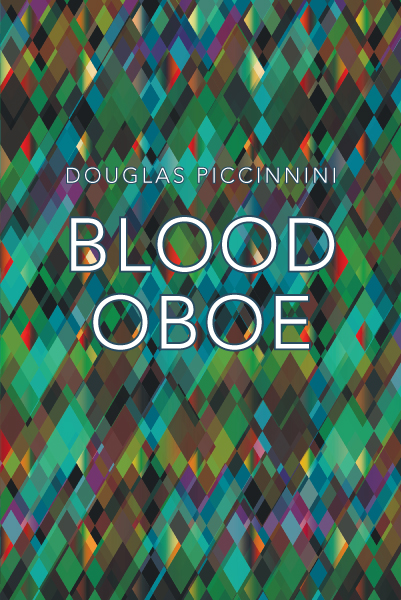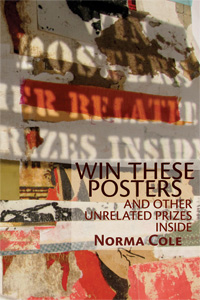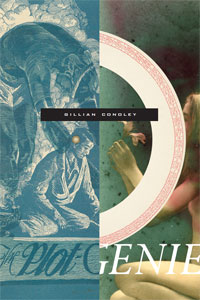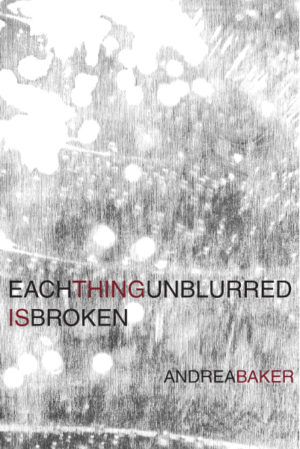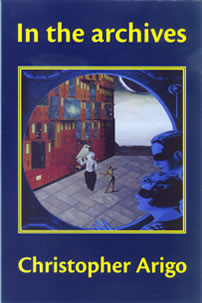Description
Blood Oboe materializes inside the labyrinth of the cosmos. These poems, possessed by tonal torque, writhe in frustration: in loss of faith, in the shadow of “progress,” in abject desire. For lack of finding transcendence in the everyday, Douglas Piccinnini’s poetry recodes the vanishing pastoral and codes the new currency of digital the age—of the person forever indebted and on trial. “[S]tepping through a look” Blood Oboe moves through an expanse of “clipped moods” more than feelings—made from feeling, that seek “to distinguish time in time.”
ONE OF LIT HUB’S BEST POETRY COLLECTIONS OF 2015
He has done it—written poems of a gnarled toughness that can’t be taken apart, chewed up, seen through. Douglas Piccinnini (the delightful name itself is incongruously dance-like, operatic) has set the mark for new poems of a terrific integrity, unsmiling (their humor is deep down, waiting); poems sharply seeing. Seeing, for instance, that the mathematical universe is maddeningly out of synch with the negative numbers of the daily emotions that cannot catch up with the day: “what’s this dumb rope to cling to.” Where is the sum? The transcendence? “All the coin towers / tooth down.”
Calvin Bedient
What can I assert about Douglas Piccinnini’s poems when they take such great care to dismantle assertions, piling their bits into a heap? Assertions are made with words, and from this heap he gives them back to the world his way, and he knows what he’s doing. George Oppen said, “if word A must be next to word B, GET it there.” Piccinnini always does, according to the mystery that his ear recognizes. “One way of grieving/a dethroned self” is through the creation of a nugatory poetic universe where no dark night is blunted but there is always an unlit match, which is to say, meaning.
Stacy Szymaszek, author of Hyperglossia
The discrepancy between what is possible and the void is here made to rub up against itself again and again, where the match that is not lit inside your pocket suddenly blooms into a grieving flame and is given away (then taken back) in an act only language can accomplish. Here is where language simply won’t be forced to story but gossips around its centers and edges, backlit in stark, bright, virtual, singing delirium. These poems show me what we lie next to: proprioception in late digital avarice, but also the mind and the poem (in their vibrant, native ontological enquiries) as avaricious as the world.
Eleni Sikelianos, author of You Animal Machine
James Merrill’s “Marsyas” might be the most fitting text for the back of this at once bewildering and clarificatory book, not because the poetry here is anything like Merrill’s, but because Douglas Piccinnini seems a descendent of that ancient, flayed musician who happened upon a way to make music and then paid for it. I like that these poems don’t much want to be “liked”; rather, Blood Oboe demands something else—something better—of its readers, all of whom will benefit from its sad ha ha and its enstranging cadences.
Graham Foust, author of To Anacreon in Heaven and Other Poems
About the Author
Reviews
Excerpt
Douglas Piccinnini was born in New York City in 1982. His writing has appeared in Antioch Review, Aufgabe, Diner Journal, Jacket, Lana Turner, The Volta, Verse, The Poetry Project Newsletter, NYTimes.com and The Seattle Review—among other publications.
He has been awarded residencies by The Vermont Studio Center, Art Farm in Marquette, NE and, The Elizabeth Bishop Society of Nova Scotia. In 2014, he was selected by Dorothea Lasky as a winner of the Summer Literary Seminars for Poetry.
Piccinnini is the author of several chapbooks including Soft (The Cultural Society) and Flag (Well Greased Press)—an encoded chromaglyph. Story Book, a novella, is forthcoming with The Cultural Society.
A brief interview with Douglas Piccinnini
(conducted by Rusty Morrison)
1. I first saw your work in the magazine Lana Turner, edited by Calvin Bedient and David Lau. The first lines of yours I read were these, from a poem titled “New Window”:
The dry gland along the crepuscular bulge
Coughs a last gong before eloping
Blonde into a dirty epiphany.
I still shiver with the shock at completely canny and yet inexplicable recognitions when I read this. I don’t know if you were thinking of Viktor Shklovsky’s now classic positing of “two attitudes toward art”—that one either views “art as a window on the world,” or one views art as “only a sketched window,” where one observes not the world, but a “world of independently existing things” where “words, and the relationship between words, thoughts and the irony of thoughts, [and] their divergence,” are the “content of art.” But, after the posing of any opposition, something like a no man’s land seems often to come along, into existence, between the two positions. You are one of the few writers I know who invite me to walk that no man’s land, or maybe I should say that you suddenly strand me there, a there that’s always here, though I see it most clearly when I’m reading you.
I met David Lau at the Chicago AWP in 2009.
I attended a panel called “Multiformalism: Postmodern Poetics of Form.” The panelists were Hank Lazer, K. Silem Mohammad and Annie Finch—I believe the panel was moderated by Susan Schultz.
I don’t remember how it started, but I remember a young guy getting in somewhat of a shouting match with one of the panelists. It was amazing to see someone getting passionate about poetics.
Later that night, I saw that same guy at the bar of the hotel I was staying at. I went up to him and introduced myself. David Lau. I had just published my first article on John Ashbery. I had something to talk about. We talked about John Ashbery. David had just published his first book, Virgil and the Mountain Cat. Anyway, we talked for a little while and I think I bought him a drink because of how great I thought it was that he was willing to literally stand up at a panel and blast a certain panelist for “fetishizing” the “rules” of a sonnet. That was inspiring. I also learned David was editing Lana Turner with Cal Bedient.
When I got back to Brooklyn, I felt inspired by my encounter with David. “New Window” was one of the first poems I wrote after that experience. Like the feeling of opening a ‘new window’ in a browser, “New Window” embodied the freedom to open a new space and explore—to write in mid chew, through digestion and through the shit of everything happening in poetry— and everything that came before. It was liberating in my work to say, “this is how my poem will happen.”
This sense of “no man’s land” is an anti-place I am drawn to: the collected ether of intelligence that I suppose has its first home in someone’s brain. When I am thinking of the poem, I am not necessarily situated in a place that I know, though there are things that I know that populate that place.
Socially and politically, it’s often seen as a weakness to occupy multiple positions at once. In physics an object can occupy the spatial dimensions of length, width, height and spacetime. Without pretending to know more than I do about physics, I think that my poems often play in a kind of spacetime, bouncing off of the fixed positions and demands of ‘normative,’ ‘clear’ communication. In the poem, there is every intention of honoring the multiplicity of feelings and ideas that that are there.
So the poems are active like the universe is active.
In cinema, for example, a contemporary viewer is primed for jump cuts, flash forwards, and flash backs that can coexist in a singular unfolding. In poetry, a considerable amount of damage can be done to a reader’s attention span and interest in the work, by traveling through the wormholes of jump cuts, or playing an unrecognizable ‘music’ that requires careful, nuanced listening. To attempt to address your question: art exists simultaneously as a window on the world and only a sketched window. They are of the same space. But it is also the willfulness to ignore the dichotomy of an either or situation—for the singular spacetime unfolding brings together not only the relationships between words, but also the relationships between worlds.
2. Cal Bedient, in his virtuoso introduction to Blood Oboe, says this “His language is tough, as he’s tough: “life is a gang. / now get. moisten.” Piccinnini is utterly accomplished, but not in the old, easily recognizable ways. He’s quick and furious but he never goes wrong, even if his subject is that everything is wrong.” Could you talk a bit about your subject, subjects, what you subject yourself to encountering as you engage the subjective in language. How do these poems come about, make their about-face, their entirely unexpected, subversive approach to explication? Maybe you can talk about how you craft the work? I am tempted to ask the oldest questions: where does the poem begin? What stance? and does that stance become disrupted in the process, stealing the sub- from its substance?
Recently, at a reading in Raleigh, NC, I think I foolishly said that all of my poems were about 9-11. At least I felt kind of foolish. I’m 32 years old and, on September 11, 2001 I was just a kid starting college. What I think I meant was that 9-11 has haunted me in a singular way since then. I don’t think of myself as patriotic. I don’t miss the idea of not having those buildings nor the ideas of what those buildings stood for. The human loss is equally perplexing in its own indeterminate way. I’m certain that I can never understand the events of that day (and thereafter) fully—the incendiary sensation of that instant—though I try to. There was an inexplicable void channeled into me that day. A void made for the space of empathy, of grief, of suspicion and of mistrust. This void seems to not be nothing, but a place.
As for the “craft” of my work: I think of my subjects. The effacement of my subject. What the subject is is the confusion of the subject. The work is a meditation towards the revelation of a complex feeling that is not merely an anecdote of love, family, war, loss, etc. but an investigation into the myriad subsets of these and other minor feelings. The poem is the purge, the disgorging.
3. Can you talk about the poems in the manuscript that were the first you wrote? and how they evolved? How did the manuscript, as a manuscript, come about? and as it did, were there poems that wouldn’t cohere with the constellation as it emerged? And if there were poems that didn’t fit your intentions for the work, did they change your intentions? or were they poems that were consumed by the whole, and disappeared? Also I wonder if you could talk about the book’s title in relation to any of this?
One of the first jobs I had in New York was working in The Strand Bookstore. My job was to shelve books in the Literature and Poetry sections as they came in. I made about $8.50/hr and spent most of my paychecks buying up out-of-print and weirdo books that you might not see anywhere. I also bought a lot of books that were quite common, but that you could get for about 7 bucks when you found the right deal. I was building my library.
While at The Strand, I met the poet and publisher Zach Barocas. He was my boss there. This was at the start of 2009. I had sent Zach a few poems for The Cultural Society before I’d met him. And then a few months later he asked if I had anything like a chapbook.
I had been working on a long poem called Soft. It was made up of interchangeable parts. About 20 sections. This poem unfolded in a special a way. Before starting work on it, I listened to recordings of Walt Whitman’s Leaves of Grass for a few months at night before I went to bed. Most times I would fall asleep about 15 minutes into the recording. The next day I’d pick up listening again. At the time I was also reading Henry David Thoreau’s Walden Pond and Keith Waldrop’s Transcendental Studies. All of the texts seemed to fit together.
Thinking of these works, I began working on Soft one page at time. I wrote a three line, three stanza poem. Then I copied and pasted this poem into a new document and re-wrote my poem, cannibalizing words, sounds—associating feelings and ideas until I had a new poem. Then I did this again and again until I felt I had exhausted this strategy. Until I felt the poem—now composed of 22 links of a chain— was complete.
Zach published Soft as a chapbook in 2010. The poem(s) appear reworked and worked in intermittently throughout Blood Oboe.
4. Could you talk about any writers &/or artists &/or thinkers who have influenced you in this work? (in what direct or indirect ways have you felt this occur?) And/or could you talk about who are you reading currently? With whom do you feel a kinship or a provocation or…?
At the risk of sounding simple, Jackson Pollock was one of the first artists that I encountered as a kid that helped me realize that a subject—and a narrative for that matter—could be different than what I had been conventionally taught. Specifically, that the narrative could chronicle its own making, and that the subject was this process. I remember being in junior high and making drip paintings in my parent’s garage with whatever I could find. There was this blue chalk powder that we had. Wood glue. Green spray paint. Black varnish. I “ruined” the garage floor but I was playing, experimenting.
It took me a while before I encountered a poet that I felt spoke outside of the canonical poems most students and young poets are first introduced to. I first read John Ashbery’s Self Portrait In A Convex Mirror in college. The overheard, conversational quality, the fragments, the sustained dream logic enticed me. Also, around this time, the playwright Mac Wellman came to visit a playwriting class I was taking with playwright Ken Urban. Ken had us read Three Americanisms. It was an introduction to creative writing class and I almost dropped the class because Ken said that we would be focusing on the short story and playwriting and not poetry. I had wanted to focus on poetry. Wellman’s Three Americanisms and Ashbery’s Self Portrait In A Convex Mirror were seminal texts for me.
In the last few years, and in no specific order, Graham Foust, Rae Armantrout, Robert Creeley and Emily Dickison became very important to my creative process. John Cage’s compositions for prepared piano and Erik Satie’s early piano compositions have taught me a lot about making a space for silence in my work. Gygöry Ligeti’s tonal masterpieces (probably best known in Stanley Kubrick’s 2001: A Space Odyssey) are perhaps the soundtrack to the “no man’s land” in my work.
5. Would you tell me a bit about yourself? Anything you are willing to share that might not be in your short bio that is published in the book?
I love cinema. I feel like cinema is the most complete medium. For me, it would be my ideal medium because of the direct access to the senses through sound, image(s) and text. The attention that it gets, being viewed in a dark room. The hypnosis involved in facing the screen—in the willingness of a viewer to give themselves over to the medium. Though recently, the way in which people watch films (and images) has dramatically changed in the past decade, as screens are everywhere. There is a lot of competition for attention.
My first encounters at the movies were the most profound and affordable experiences that I had with art. I adore Victor Fleming’s The Wizard of Oz and Frank Capra’s It’s A Wonderful Life in the way these films are superficially appealing to a wide audience: the story and characters are likeable. The genius in films like The Wizard of Oz and It’s A Wonderful Life reside in the handling of the struggle against what seems like an identifiable, yet insurmountable evil. The subsequent journeys of both Dorothy Gale and George Bailey in alternate worlds are insightful, in so much as their longing for an otherness or other reality becomes grounded in an appreciation for their actual reality.
To return to the idea of a “no man’s land,” the spaces in which both of these films bloom is in the transformative, alterative worlds these characters are able to travel to. I think that my poems have this allowance—this removal from convention—and possess the potential to reflect on what Cal Bedient identifies as my “subject is that everything is wrong.”
6. You were instrumental in the selection of the image that is used in the cover design for this book. Would you describe your considerations in your arrival at the choice for this cover image? How does this cover align with your intentions for the book?
I like patterns. I like symmetry. In Egyptian hieroglyphs there is often a perceived lack of a focal point. The image is like a textile, to be absorbed in totality.
When I approached artist Darren McManus and asked for his help in creating a digital image, we worked together to produce an image that we felt was both compelling as a textile-based image and suitable to lay text over. That is to say, even without the text on it, you would want to look at the image as an art object.
“Douglas Piccinnini is a poet who causes space—verbal, figural space—to contract, inducing a negative lyric that reverses the expansive release characteristic of positive versions of poetic epiphany.”
The poems in Blood Oboe dwell in loss of faith, in frustration of the vanishing pastoral, and the new currency of the digital age.
If anything suffices in or near the Puccinnini ex-world, suffice it to say that each of his poems is something to marvel at. He has arrived complete, “already late, dismembering.”
FAITH VOID
I to a looser, saprophytic practice
steeped in lost coinage.
It’s time I chew
abrupt books to nothing.
Symbolic debris stands
in the trees for trees.
A feel fruits through.
You thought you thought
more about things than
colors do rhyming.

